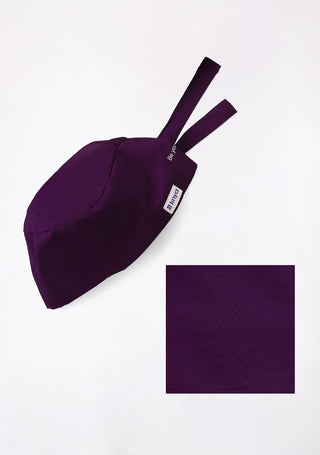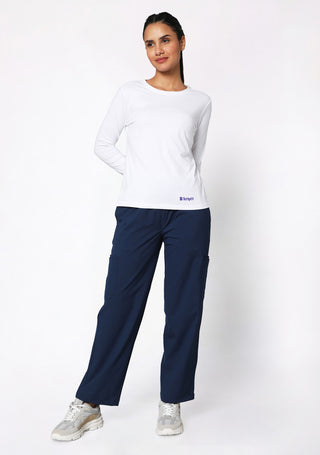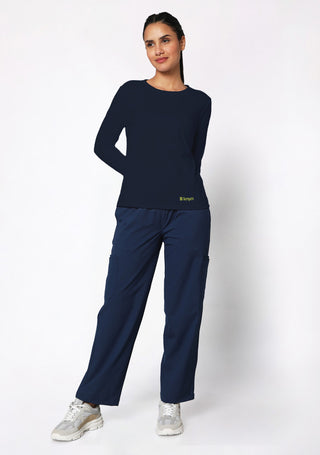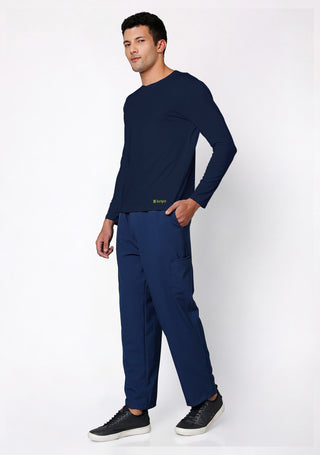Quadriceps Tendonitis vs Patellar Tendonitis: Both Patellar Tendinitis and Quadriceps Tendonitis are frequent knee injuries found in athletes and those who perform activities that put repetitive strain on the knee joint. Although they are similar, the exact tendons that are damaged vary. While Patellar Tendinitis affects the patellar tendon, which connects the patella to the tibia, quadriceps tendonitis affects the quadriceps tendon, which connects the quadriceps muscles to the patella. The two illnesses may cause slightly different symptoms, such as soreness and tenderness around the knee. Nonetheless, overuse or excessive strain on the knee, which causes tissue irritation and inflammation, is frequently the cause of both disorders. Depending on the patient's needs, treatment usually consists of rest, ice, physical therapy, and anti-inflammatory drugs.
Difference between Quadriceps Tendonitis and Patellar Tendonitis
Patellar Tendonitis, often known as jumper's knee, affects the patellar tendon and affects the bottom of the kneecap. It is usually aggravated by jumping exercises. Quadriceps Tendonitis affects the top of the kneecap and includes the quadriceps tendon. The table below provides the differences between Quadriceps Tendonitis and Patellar Tendonitis.
|
Aspect |
Quadriceps Tendonitis |
Patellar Tendonitis |
|
Location of Pain |
Top of the kneecap (patella) and surrounding area |
Bottom of the kneecap (patella) and surrounding area |
|
Affected Tendon |
Quadriceps tendon |
Patellar tendon |
|
Function |
Connects quadriceps muscles to the patella |
Connects patella to the tibia |
|
Activities Aggravating Pain |
Activities involving bending or straightening the knee, such as climbing stairs or jumping |
Activities involving jumping, such as basketball or volleyball |
|
Commonly Associated Sports |
Weightlifting, running, cycling |
Basketball, volleyball, soccer |
|
Symptoms |
Pain, tenderness, swelling, difficulty with knee movement |
Pain, tenderness, swelling, stiffness, weakness |
|
Diagnosis |
Based on symptoms, physical examination, and possibly imaging studies (such as MRI) |
Based on symptoms, physical examination, and possibly imaging studies (such as MRI) |
|
Treatment |
Rest, ice, compression, elevation (RICE), physical therapy, anti-inflammatory medications, sometimes corticosteroid injections or surgery |
Rest, ice, compression, elevation (RICE), physical therapy, anti-inflammatory medications, sometimes corticosteroid injections or surgery |
|
Prognosis |
Recovery time varies but generally good with appropriate treatment and rehabilitation |
Recovery time varies but generally good with appropriate treatment and rehabilitation |
Browse The Best Scrubs Collection!
What is Quadriceps Tendonitis?
Quadriceps Tendonitis, also known as Quadriceps Tendinopathy, is an inflammation or irritation of the tendon that joins the quadriceps muscles to the kneecap. This disorder frequently results from overuse or repetitive strain on the tendon, which is observed in athletes who play sports involving frequent knee bending, sprinting, or jumping. The kneecap region is accompanied by discomfort, edema, and stiffness that are made worse by quadriceps-related exercises. Physical therapy exercises to increase muscle strength and flexibility, medication, rest, and ice therapy are commonly used in conjunction with treatment. It is imperative to treat quadriceps tendonitis as soon as possible to avoid more issues and guarantee a quicker recovery.
Causes of Quadriceps Tendonitis
- Overuse: Repetitive motions like running, jumping, or squatting that put a strain on the quadriceps muscles and tendons can cause overuse injuries and tendon inflammation.
- Increase in Activity Suddenly: Increasing physical activity levels suddenly, without good conditioning or enough time to recover, can strain the quadriceps tendon and cause Quadriceps Tendonitis.
- Poor Biomechanics: Deviations from normal in posture, gait, or body mechanics can put an undue amount of strain on the Quadriceps Tendon, raising the possibility of injury and inflammation.
- Muscle Imbalances: The biomechanics of the knee joint can be changed and Quadriceps Tendonitis can be exacerbated by weakening or tightening adjacent muscles, such as the hamstrings, hip muscles, or quadriceps.
- Age-Related Changes: As people age, their tendons may lose some of their flexibility and become more vulnerable to damage. The tendon's structure may be weakened by degenerative changes, which may raise the risk of inflammation and Quadriceps Tendonitis.
- Previous Injury: People with a history of knee injuries or trauma, such as a direct blow to the knee or a previous tendon injury, are more likely to develop Quadriceps Tendonitis.
Symptoms of Quadriceps Tendonitis
- Pain: One of the most prevalent signs of Quadriceps Tendonitis is pain located directly above or around the patella, the top of the kneecap. Initially, the discomfort could be achy and mild, but when performing specific quadriceps-related motions or activities, it can intensify or become severe.
- Tenderness: The afflicted region may feel sensitive to touch, particularly in the region where the quadriceps tendon connects to the patella.
- Swelling: An inflamed quadriceps tendon can cause swelling or inflammation around the knee joint, especially in the region above the patella.
- Stiffness: People who have Quadriceps Tendonitis may feel stiffness or a reduction in their range of motion in the knee, especially when they try to extend their knee or conduct exercises that use their quadriceps muscles.
- Weakness: If the tendonitis is severe or has persisted for a long time, there may be weakness in the quadriceps muscles or trouble fully straightening the knee.
What is Patellar Tendonitis?
Patellar Tendonitis, often known as jumper's knee, is an overuse ailment characterized by inflammation of the patellar tendon that connects the kneecap to the shinbone. Repetitive stress is often the cause of this illness, especially in activities that include running or leaping. Just below the kneecap, there is pain and tenderness that is exacerbated by activities such as squatting, leaping, or climbing stairs. The standard course of treatment includes rest, ice therapy, anti-inflammatory drugs, and physical therapy exercises designed to increase knee flexibility and strength. While most cases can be properly controlled with conservative treatments, in extreme situations, surgery or corticosteroid injections may be considered.
Causes of Patellar Tendonitis
- Overuse: Playing sports like basketball, volleyball, or track and field that require constant leaping or running can strain the patellar tendon, causing inflammation and discomfort.
- Imbalances in the Muscles: The patellar tendon may be overstressed due to weakness or tightness in the muscles surrounding the knee, especially the hamstrings and quadriceps, which can lead to Patellar Tendonitis..
- Poor Biomechanics: Problems with the way the body moves, including landing incorrectly when sprinting or jumping, can put too much strain on the patellar tendon and raise the risk of Patellar Tendonitis.
- Training Mistakes: Inadequate conditioning and rest periods combined with abrupt increases in volume, duration, or intensity of exercise can strain the patellar tendon and cause damage.
- Insufficient Warm-Up or Stretching: Patellar Tendonitis can be exacerbated by inadequate warm-up or stretching of the knee muscles, which can lead to increased stiffness and decreased flexibility.
Symptoms of Patellar Tendonitis
- Pain: The main sign of Patellar Tendonitis is pain, which is typically felt immediately over the tendon, just below the kneecap. Depending on the degree of the disease, the pain could be either severe and strong or dull and achy.
- Tenderness: The patellar tendon's surrounding area is frequently sensitive to touch. Applying pressure or feeling the tendon may cause pain or discomfort.
- Swelling: Localized swelling surrounding the affected area may result from patellar tendon inflammation. Mild to moderate swelling may exacerbate with activities.
- Stiffness: Patellar Tendonitis patients may have stiffness in the knee joint, especially during extended periods of inactivity or rest. Usually, this stiffness goes away with movement, but it can come back after extended periods of inactivity.
Shop Best Lab Coats From Here!
Similarities between Quadriceps Tendonitis and Patellar Tendonitis
- Location: The knee joint is impacted by both Patellar Tendonitis and Quadriceps Tendinitis. Patellar Tendonitis affects the patellar tendon, which connects the patella to the shinbone (tibia), whereas Quadriceps Tendonitis affects the quadriceps tendon, which connects the quadriceps muscles to the patella (kneecap). As a result, the front of the knee is where both diseases are present.
- Overuse Injury: Repetitive stress or overuse of the afflicted tendons is a prevalent cause of both disorders. Running, jumping, and abrupt direction changes are among the exercises that can cause both Patellar Tendonitis and Quadriceps Tendinitis
- Symptoms: Patellar Tendinitis and Quadriceps Tendonitis can have similar symptoms. In the affected location, these illnesses usually induce pain, soreness, and swelling; these symptoms may get worse with movement and get better with rest. Furthermore, stiffness and weakness in the knee joint may be experienced by people with either ailment.
- Risk Factors: People may be predisposed to both Patellar Tendonitis and Quadriceps Tendonitis due to similar risk factors. These include engaging in sports or other activities that need repetitive knee motions, not warming up or stretching enough, having imbalanced muscles, having poor biomechanics, and having structural problems with the knee joint.
Despite these variations, overuse injuries such as Patellar Tendonitis and Quadriceps Tendonitis require conservative treatment strategies that target the same areas of the body, lowering inflammation, strengthening knee muscles, and addressing underlying causes to prevent recurrence. Surgical treatments or corticosteroid injections may be considered in extreme situations or when conservative approaches are not successful. For any ailment to be effectively managed, a proper diagnosis and customized treatment programs are necessary.
Order the Best Jogger Scrub From Here!
| Check out More Articles | |
| Difference Between Cartilage and Bone | |
| Difference Between Endocrine and Exocrine Glands | |
| Difference Between Cell Wall and Cell Membrane | |















